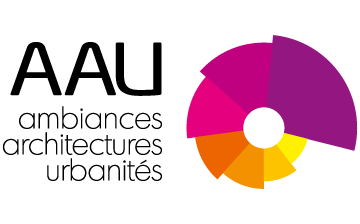EC-45/85. Les réalisations culturelles 1945-1985 en France, une architecture du XXIe siècle ?
EC-45/85. Cultural productions 1945-1985 in France, a twenty-first century architecture?
Financement : Projet financé par le ministère de la Culture dans le cadre du programme interministériel de recherche « Architecture du XXe siècle, matière à projet pour la ville durable du XXIe siècle ».
Responsable(s) scientifique : Xavier Dousson (ENSA-PVS), Elise Guillerm (ENSA-Normandie), Guillaume Meigneux (ENSAPVS), Simon Texier (U-Picardie)
Contrat de recherche terminé en décembre 2021
FR
Equipes de recherche partenaires :
- AAU-CRESSON : Guillaume Meigneux (responsable), Suzel Balez, Nicolas Tixier.
- LACTH (ENSAP Lille)
- CRAE (Université de Picardie-Jules Verne)
- ENSA Rouen
- ENSA Paris Val-de-Seine
EC 45/85 désigne une typologie architecturale singulière : les équipements culturels du second XXe siècle, abordés par le prisme de l’évolution du bâti et mesurés par une approche pluridisciplinaire.Ces édifices ont, en leur temps, permis une recherche architecturale ouverte pour leurs concepteurs, à la fois expérimentale et à la croisée de l’ensemble des arts de l’espace. Ils représentent des objets originaux, prestigieux, et identifiés par les usagers. Sans perdre de vue l’actualité de ces édifices, l’enjeu de cette recherche consiste à mettre en lumière la valeur culturelle et collective qui les entoure, depuis leur édification jusqu’à nos jours. Il s’agit de faire émerger la part symbolique et imaginaire de ces édifices architecturaux, encore trop peu souvent convoquée dans le cadre de projets d’adaptations du bâti.
En développant cinq monographies d’édifices, la recherche examinera les ressorts inattendus liés aux édifices réhabilités : mémoire, appropriations populaires, récits, expression plastique, réception médiatique, production audiovisuelle.
EN
Funding: French Ministry of Culture.
Partnering research teams:
- AAU-CRESSON : Guillaume Meigneux (responsable), Suzel Balez, Nicolas Tixier.
- LACTH (ENSAP Lille)
- CRAE (Université de Picardie-Jules Verne)
- ENSA Rouen
- ENSA Paris Val-de-Seine
EC 45/85 refers to a singular architectural typology: cultural equipment of the second 20th century, addressed through the prism of the evolution of the built environment and measured with a pluridisciplinary approach. In their time, these buildings have allowed for open architectural research for their designers, both experimental and at the crossroads of spatial arts as a whole. They represent original, prestigious objects that are identified by the users. Without losing sight of the currentness of these buildings, this research aims to highlight the cultural and collective value that surrounds them, from their construction time up to today. The point is to bring out the symbolic and imaginary share of these architectural buildings that are still rarely invoked as part of adaptation projects for the built environment.
By developing five monographies of buildings, the study will examine the unexpected connections to the rehabilitated buildings: memory, popular appropriation, narratives, plastic expression, media coverage, audio-visual production.
Retrouvez tous les contrats de recherche de l'équipe CRESSON
